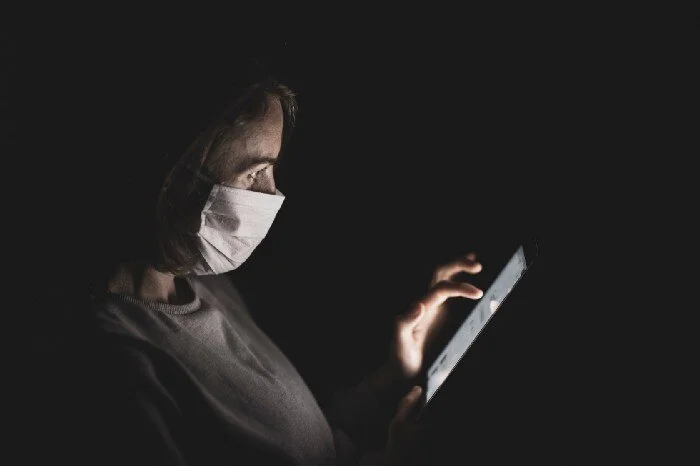At Tidal Equality, innovation isn’t just about creating something new—it’s about making meaningful changes to existing work, processes, and decision-making to ensure they are fairer, more inclusive, and equitable. This broader view of innovation prioritizes reducing bias, barriers, and inequalities to promote fairness and equal opportunity for all. But while the concept of equitable innovation is gaining attention, few organizations have a scalable method for achieving it. That's where the Equity Sequence® comes in—a practical framework designed to guide individuals and organizations in turning equitable ideas into actionable, lasting change.
Read MoreHaving completed the training (along with his staff), Ian has adopted a take-it-and-run-with-it energy, applying the Equity Sequence™ toward as many aspects of the program’s processes as he can. Toward recruitment. Toward admissions. And toward the curriculum.
Is a traditional science degree truly a necessity toward becoming an effective clinician? If a Black or Indigenous candidate were to come to an interview with a panel of all-White physicians, would their level of ease be the same as a White candidate’s? Does the four-year GPA average disadvantage students who might get off to a slow start but end up academically strong? All this questioning has led their task force to make tangible, measurable, concrete changes to the program.
As extremes of economic inequality, exacerbated by the pandemic, make it impossible to imagine simply going back to business as usual, the viral spread of far-right extremism and escalating nativist rhetoric make it hard to shake off a sense of foreboding.
We need to address head-on, rather than dance around, the parallels between White nationalist groups on the one hand, intent on maintaining the current power structure or even returning it to an outdated past, and the kind of uneasiness and resistance you still find in the professional world; the academic; the world of arts and entertainment; and countless others, toward the idea of expanding equity and disrupting or challenging an existing power dynamic in the process.
So what will all of our questions actually give us? Beautiful graphics and visuals representing analytics that are “hit-and-miss” and rife with bias themselves? “Hit-and-miss” like the effectiveness of so many “gold standard” D&I interventions - namely, unconscious bias training, among others?
How can we prevent metrics, benchmarking, and indexing from becoming the new tick-box risk-mitigation exercise - part of the window-dressing of “woke” organizations?
Read MoreBias training wasn’t created by people with experiences of discrimination and prejudice.
It wasn’t created by folks who were passionate about making a wave that would change the landscape and ultimately create a more equal world.
It wasn’t designed to actually work.
Read MoreJob interviews are like first dates: good impressions count, awkwardness can occur, and outcomes are unpredictable.
But job interviews shouldn’t be like first dates. If your organization is looking to hire right the first time, consider evolving (and debiasing) your hiring practices.
Read MoreAt the end of the day, regardless of the word(s) we use to identify ourselves or the diversity of our experiences as disabled people, we need solidarity and intersectionality in a broader collective pursuit of equality hand-in-hand with others engaged in the same pursuit - women, people of colour, Indigenous folks, immigrants, the elderly, the LGBTQ community, and so on. What we’re all after is an equal opportunity to reach our full potential.
Read MoreWe owe it to the world we’re designing, whether we know it or not, to finally confront the fact that the vast majority of our organizations and institutions have inequality baked in.
Inequality in the DNA.
Black folks know this. Other marginalized and underrepresented groups know this.
It f*cking sucks.
And it is the motherlode of opportunities for reform, for (r)evolution, for re-design, for co-creation.
So, if all it took was the business case. If leaders make their decisions based on ROI and fiduciary responsibility and market value and all the rest of it, why isn’t John the CEO and all the other “John-the-CEOs” pound their fist on the table and declare: “If we don’t have 50/50 gender representation across the ranks of our organization… if we don’t hire and promote all people - regardless of race, gender, etc. - at equal rates… if we don’t create a culture of anti-sexism, anti-racism and so-on… Then people at this company don’t have an equal opportunity to succeed and achieve their full potential. Then - godammit - neither can this company! And that’s not okay!”
Why don’t they?
Read MoreMany decision-makers are particularly susceptible in crisis situations to making mistakes and bad decisions due to overconfidence, excessive risk taking, and conscious and unconscious biases of all kinds.
Read MoreOur online spaces are designed in ways that prevent so many people - too many people - from connecting, buying and selling, entertaining, informing, innovating. Their accessibility, or lack thereof, determines whether people have an equal opportunity to access all that the digital world has to offer.
Read MoreSo, let me say again, if your female founder support program (or event or bootcamp or network, or what have you) doesn’t educate women about the gender inequality of the VC ecosystem, you’re setting them up to fail.
Read MoreWe’ve been driven by the question: How can we empower everyday Changemakers, wherever they live, work, and play?
On the back of years of research, and practice leading a new wave of equity, diversity, and inclusion work, we’re excited to introduce you to the Equity Sequence™ - our evidence-based alternative to bias training.
Read MoreWhy do I care? Because (in the US) more than $10B is invested annually, and that’s a LOT OF MONEY. Some of that is public money!
Public money being spent by public schools, public education institutions, health institutions… in many cases, organizations that aren’t flush with the cash that Fortune 500s wield.
Read MoreWe just turned off the switch at some point, because the societal lens skewed and it’s brought us to a point of looking at things upside down.
Yes, humans are complex – neurobiologically we are an amazing species, and we still don’t know everything about what our hugely diverse bodies and brains can do.
Read MoreIndividuals who don’t conform to stereotypical expressions of masculinity or femininity with gender-non conforming identities (transgender being one) are at a greater risk of being victims of GBV.
Read MoreThe charitable sector prides itself on being a force for good, but the reality is that many in our sector suffer from gender-based violence. The statistics are stark.
Read MoreWhen 90% of VCs are male, and 87% of VC funding goes to all-male founding teams, it’s safe to say the popular t-shirts are wrong. The future isn’t female. Or, at least, it isn’t being shaped by women in this regard. It’s certainly not being shaped by women of colour.
Read More

















